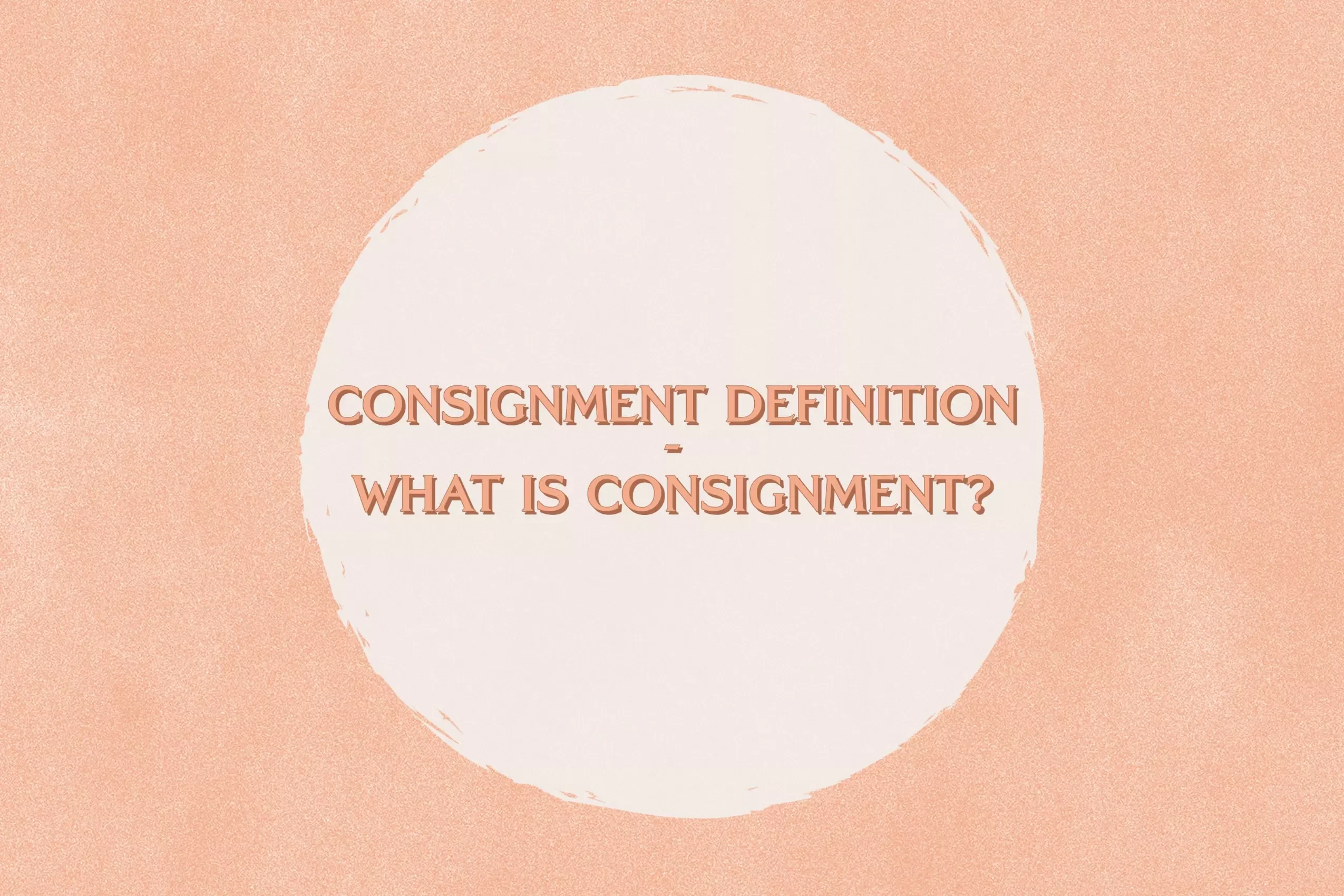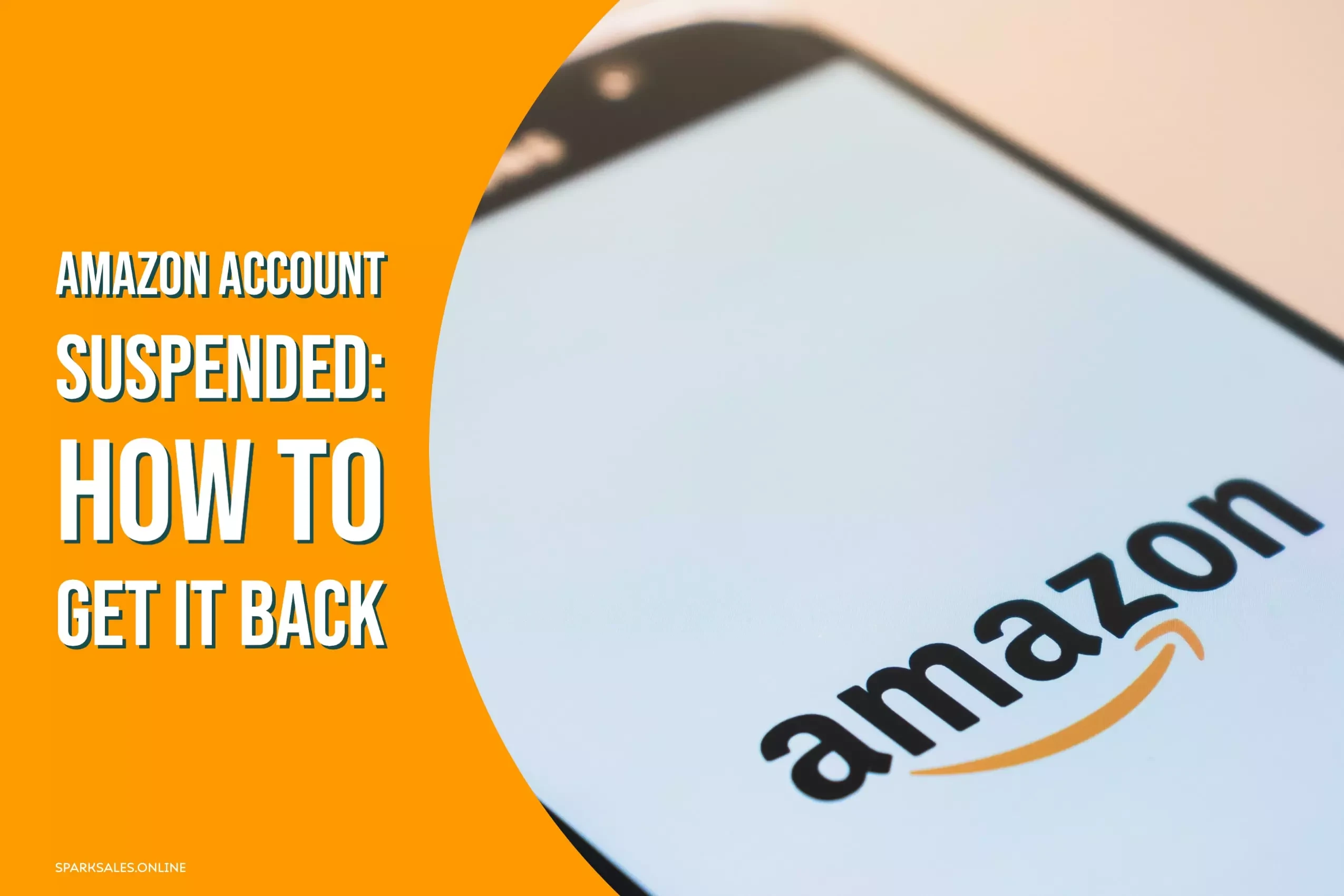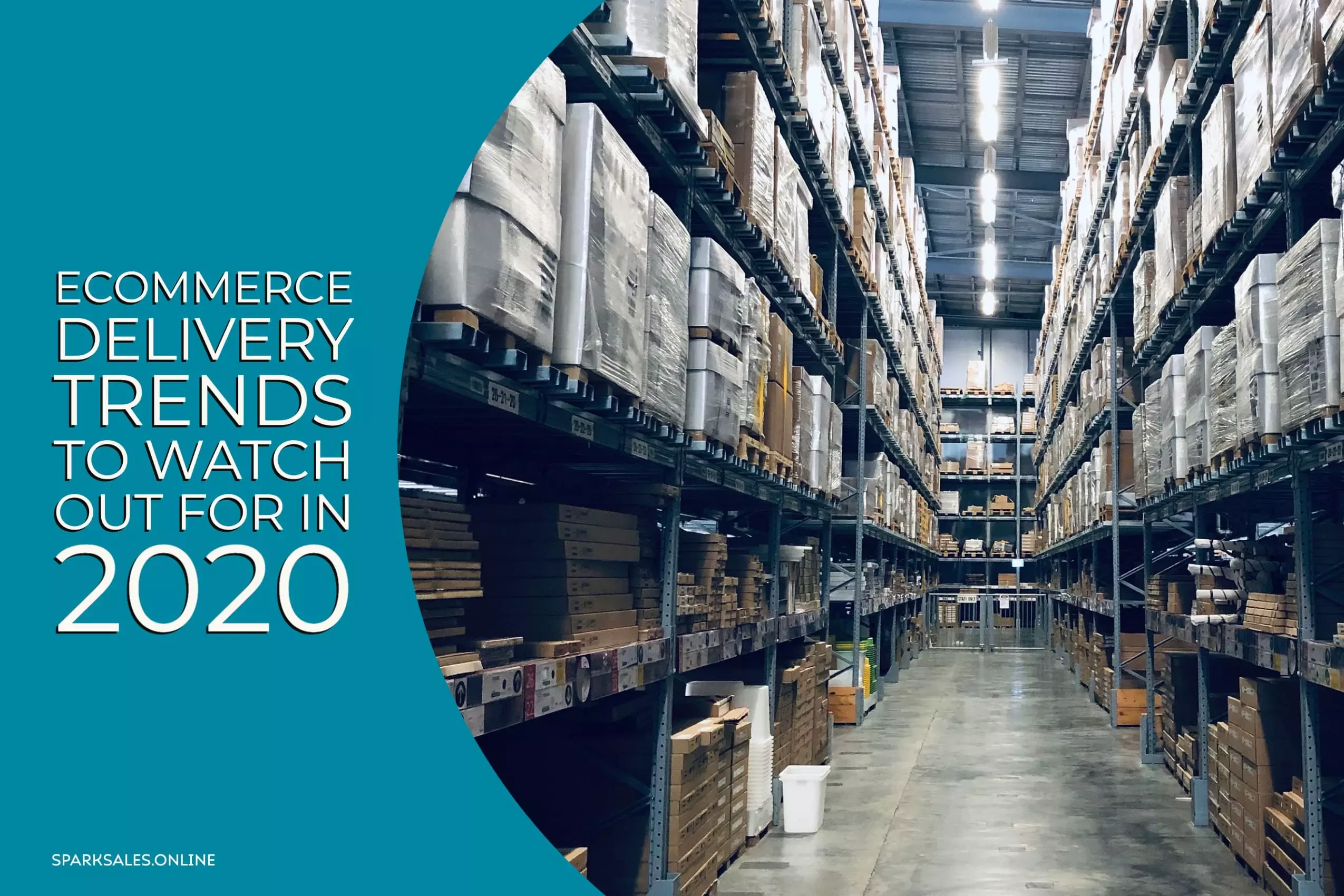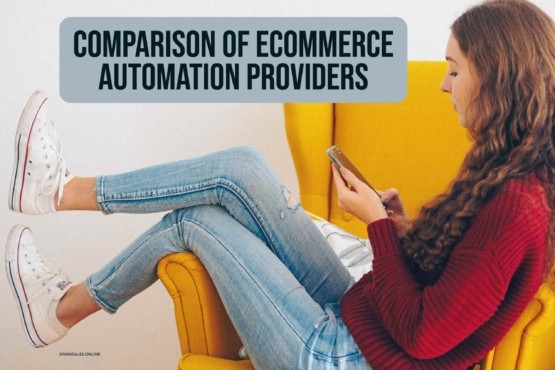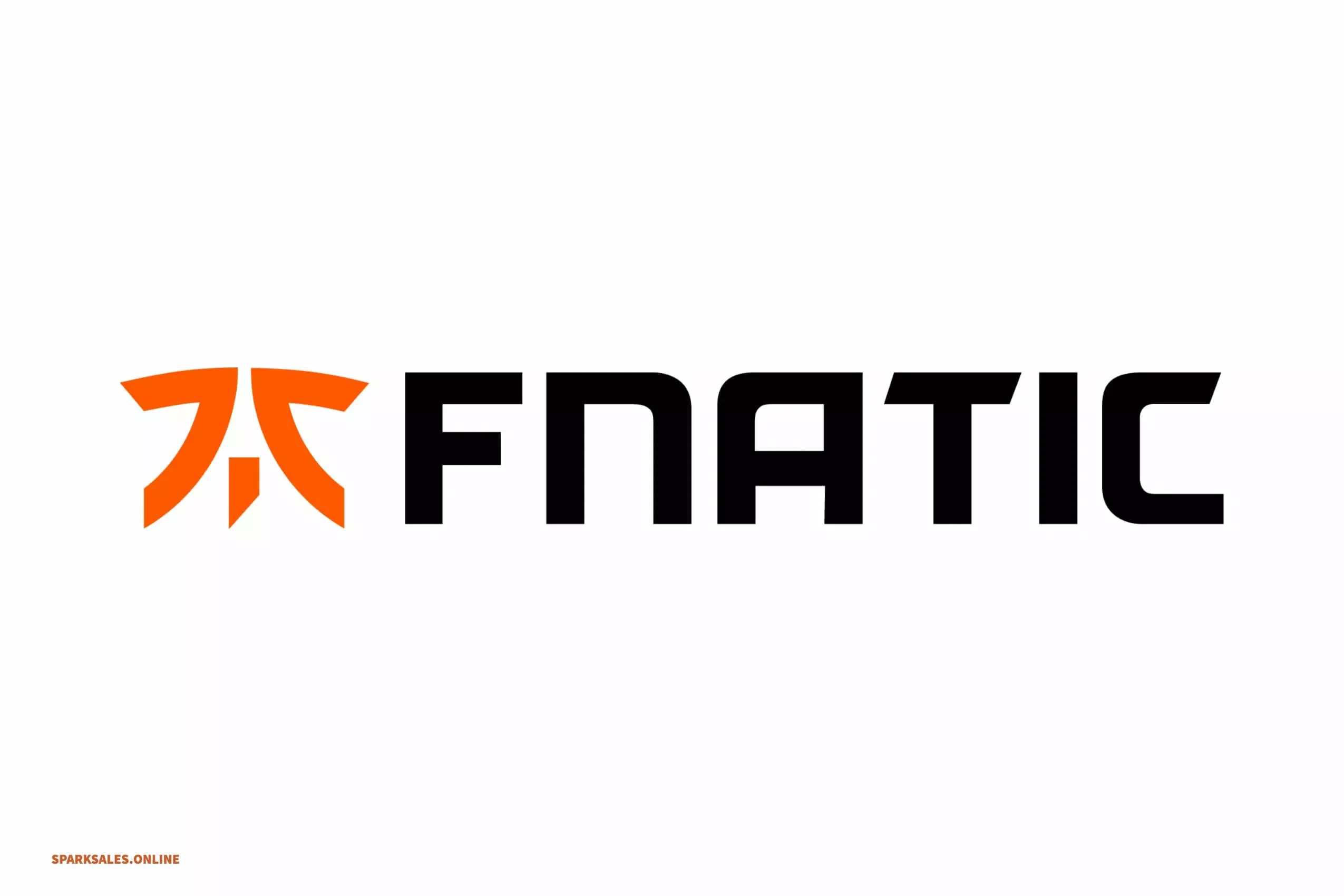Today we are going to look into the consignment business model. Whether you’re trying to consign items or you’re thinking of opening up your own consignment company. I’m going to go through different parts of the consignment process and walk you through the pros and cons of consignment as a consignor/consignee, and help you investigate whether this is the business you want to get into.
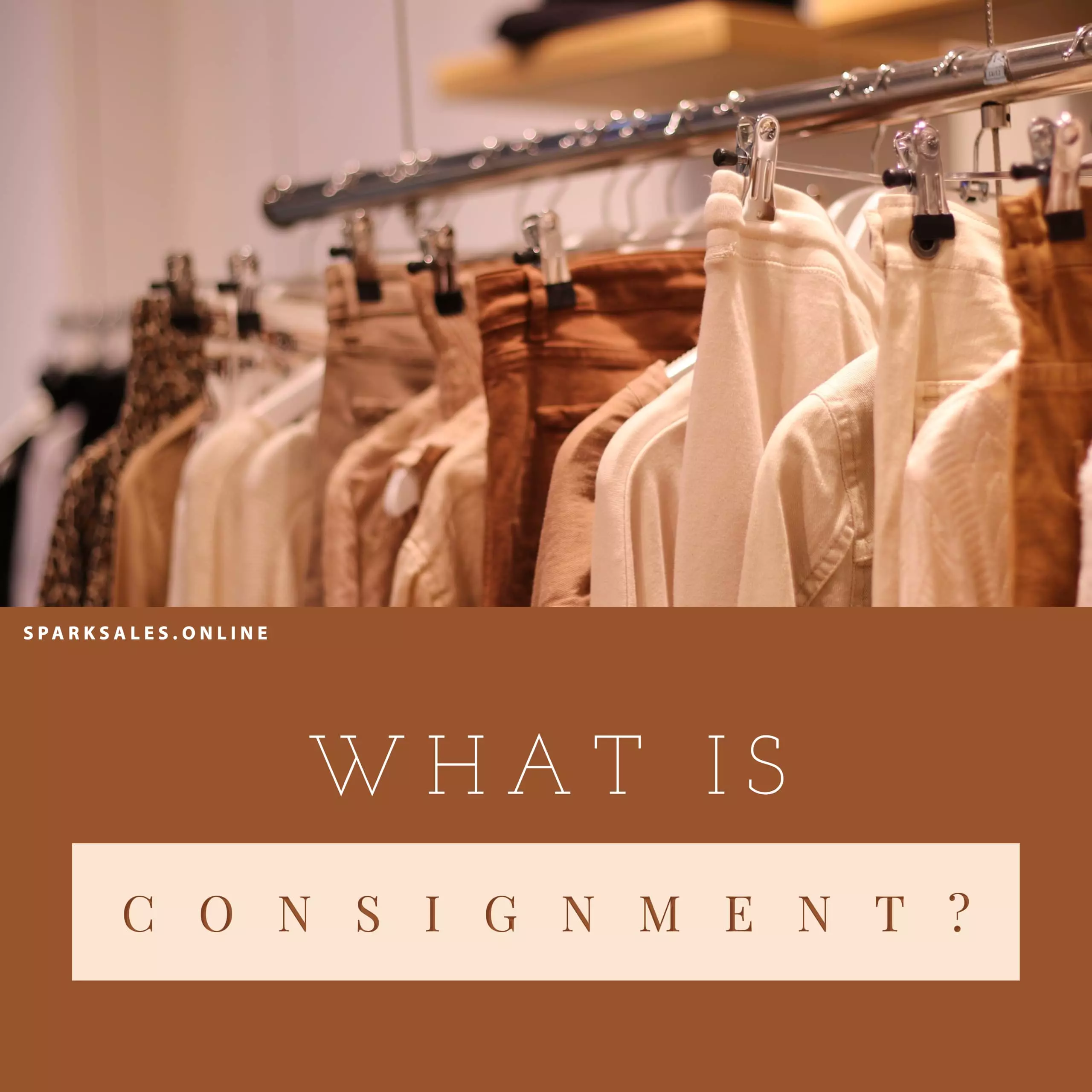
What Is Consignment?
The first thing I want to cover today is what consignment is. I think the key is understanding first and foremost what the difference is between consignment stores and charity shops. The difference between a consignment store and a charity shop is very tricky to determine because there’s a fine line between the two.
Consequently, many do not understand the differences. Knowing how the two differ will give you more direction on better strategising and maximising your time as a consignment owner, which is definitely critical to a successful business.
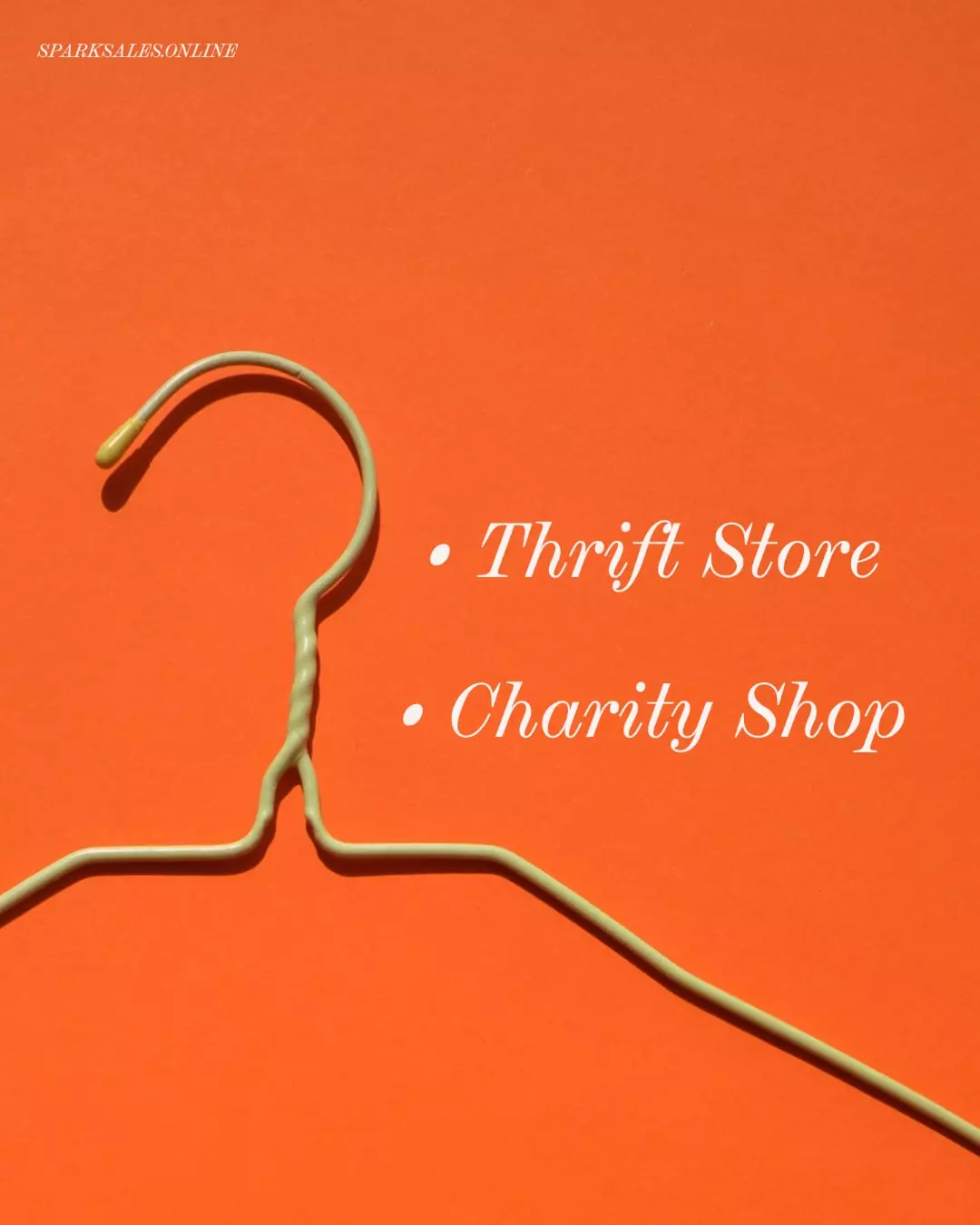
Charity Shop
The items in a charity shop most of the time are widely donated. So that’s one thing to think about. Sometimes, that charity shop may be set in place to back a charity, or the proceeds may be going towards a donation to a charity of some sort.
Also, in the US, a thrift store will give you documentation that you can use as tax credits when you file your taxes because you have donated items to that thrift store organisation.
Often, a charity shop will have set pricing. So when you walk into a charity shop, they may have signs that say something like “all men’s shirts £5.99”. Often, they don’t consider the quality, the style, the material, the year the item was manufactured or the designer label; they’re not looking at any of that. Instead, their goal is to get as much merchandise in as possible and get it out the door as quickly as possible because the whole point is to raise funds.
Shopping at a charity shop can sometimes be overwhelming because it can be very unorganised, and it can be like a treasure hunt, and that’s great if that’s what you’re looking for. Many people all over Instagram and Facebook have their own Etsy sites, and they’re on Poshmark, and they love it. They love the thrill of going into a charity shop and buying low and selling high, and that’s great if that’s your thing.
Or perhaps you’re a charity shop buyer just for your own gain, not necessarily to resell. Maybe you like the thrill of hunting and finding that great deal or that great bargain and being able to tell others about it. Perhaps it’s a pair of Gucci shoes, and the condition is moderate, and you only pay £20 for them, fantastic, right? That’s a great deal.
Now you can find pieces that range from crafty self-made items to high-end designer labels in charity shops; thrifting is a mixed bag at the end of the day, and as I said, there are some great finds, and if that’s your deal, perfect, but thrifting and consignment are two vastly different things in that regard.
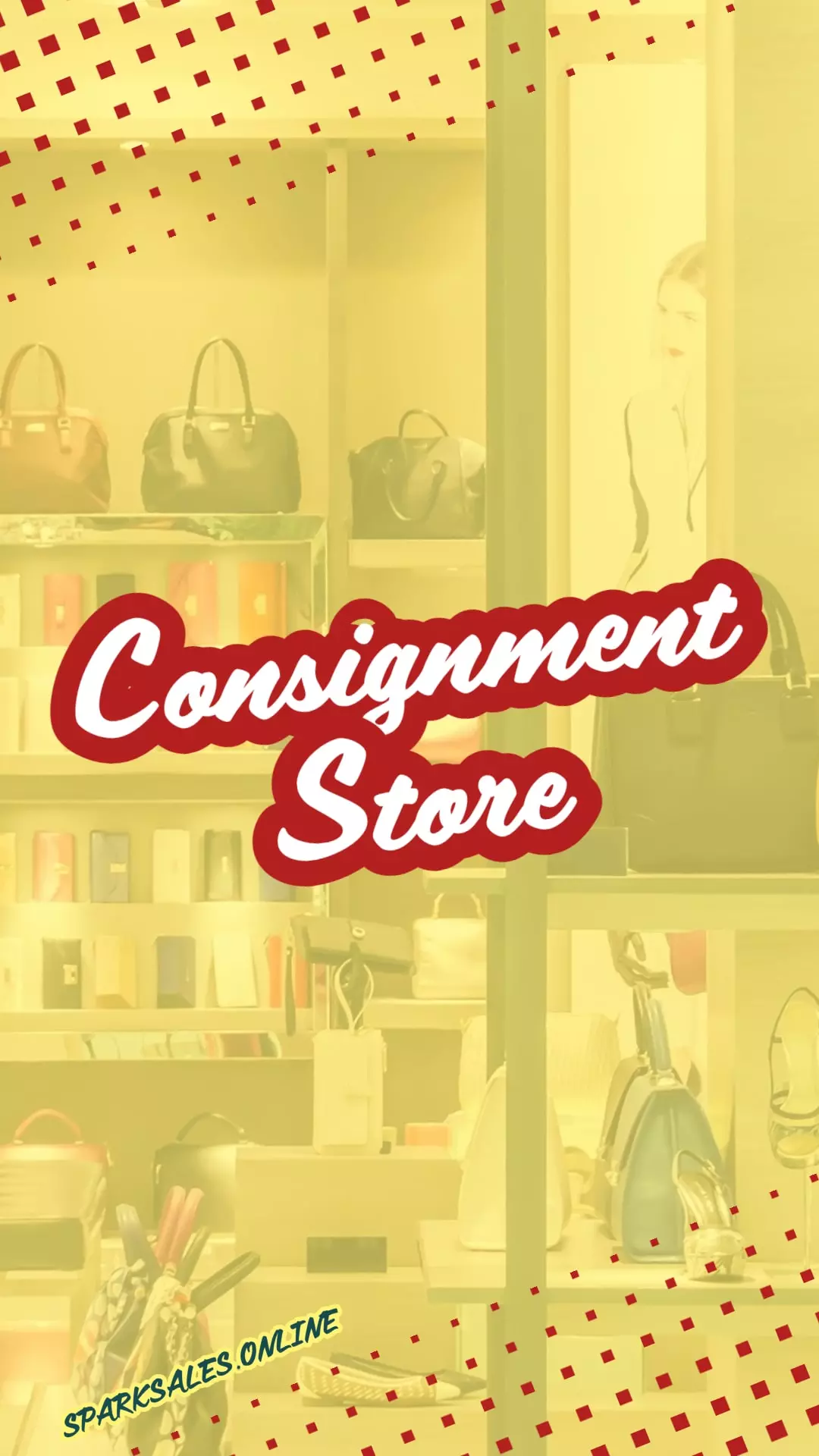
Consignment Store
With a consignment store, whether it’s a physical store or online, one of the things to be mindful of is that the product is put under much more scrutiny than it will be for a charity shop.
In consignment, those consignment employees who take in products will investigate your items a lot more. They’re going to look at it very differently; they’re thinking about the quality, the brand name, and how much they will be able to resell it for versus what it retails for. They’re considering if it’s still being sold in the retail market, and at the end of the day, they make their choices based on different factors and they sometimes have much higher standards regarding what they can accept.
Usually, those items have to be approved before even being accepted. Many only take a limited amount of items, too; you may see certain consignment companies that will only take certain brands, maybe only high-end luxury brands like The RealReal. Perhaps they’re more product category-focused. Maybe they only deal in jewellery like an online consignment resale marketplace called I Do Now I Don’t that only work with high-end jewellery.
Maybe it’s a reseller marketplace that only deals with dealers. Therefore you have to have a dealer’s license regardless of what you’re selling. So you could still be selling that same Louis Vuitton bag that’s being sold on eBay, Mercari or Poshmark, but you have to have a dealer’s license.
If done well, the shopping experience with a consignment shop can be enjoyable and almost feel like you’re walking into a retail store. So that’s the difference; there’s no hunting to try to find your item. It isn’t a treasure hunt. You could walk into a consignment store and sometimes mistake it for an actual retail store until you see the pricing and how they do some of their marketing.
So, in summary, consignment is when preowned items are entrusted to a consignment business until somebody purchases those items. We’re going to get into that a little bit later in the article because I think that’s something to think about if you’re considering starting your own consignment business or thinking about consigning products.
Simply put, once you give a consignment store your items to sell and they sell your items, they will then give you a percentage or an amount of that sale, and they receive a rate or an amount of that sale too. Regardless of what you call yourself: consignor or consignee, no one is getting paid until that item sells.
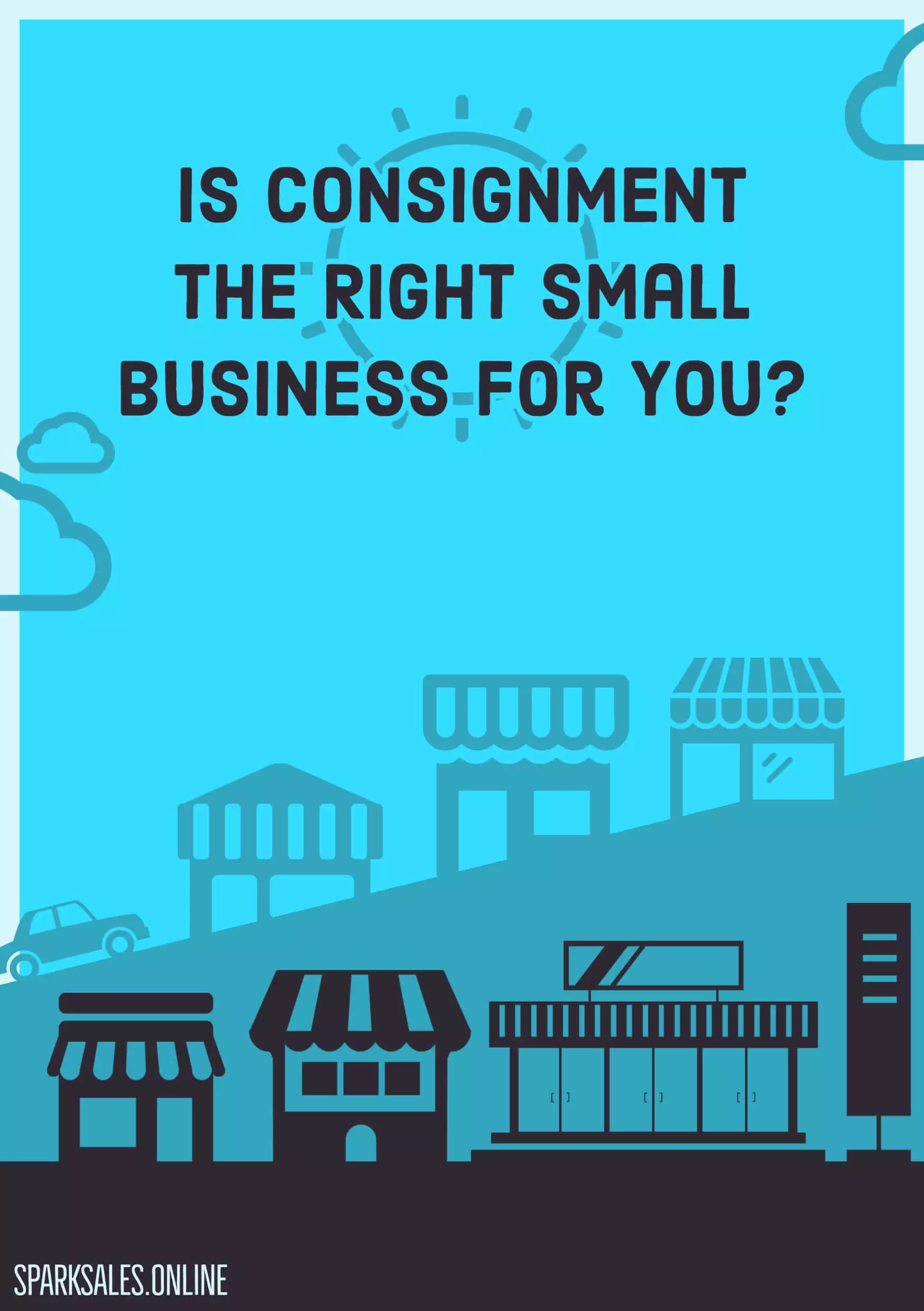
Is Consignment the Right Small Business for You?
That’s the first question you need to ask yourself; just because you want to do it doesn’t mean you necessarily should be doing it because this isn’t one of those industries where you can make a little bit of money and get out quickly. So you’ve got to be in this business for the long haul, and you have to have a lot of patience. With consignment, you won’t receive money until the item is sold, so it’s unlikely that you will open your store today and be rolling in the dough 30 days later.
For example, today, The RealReal is a publicly-traded company, but back in the day when they were not, and it was that one owner, she started out like everybody else, relying on her contacts, talking to people, being hands on and it certainly didn’t happen overnight.
Now consignment isn’t all bad, but I want you to understand the common pitfalls of the industry:
There are, of course, cash flow requirements. If you have a bricks and mortar business, you need to consider how much it will cost to keep your lights on, pay your rent and keep your shelves stocked.
You don’t have anything to sell until someone trusts you to sell their items. So someone’s got to walk through your door or contact you to say that they want you to sell their items. The proof is in the pudding; you have to have that trust with your contracted sellers to sell their product.
Let’s talk about some of the other issues that you may have if you have a physical store:
You’ve got to staff it. So you’ve got to have enough workflow to pay payroll, to insure the products, to ship the products to a facilitation centre, and you have to consider all of those things.
For example, if goods get lost or damaged while they are in your hands, you have to pay out to your consignment client the total price of that item. It could be a £10 item; it could be a hundred-pound item. But, still, you have to understand that you’re the one that’s going to pay for any damage to those goods out of pocket, and that could be costly.
Still, there are plenty of benefits that come with the consignment business:
The principal advantage is that it allows you to sell preowned products without the expense. So you don’t have to put a lot of money upfront. Now you have to put some money upfront; it’s your business, after all, so you’re going to have to make a financial investment but not necessarily as far as buying the product. Whereas, if you’re going to auctions or you are a reseller that’s buying low to sell high, then you’re probably putting a considerable amount of money upfront.
So with a consignment business, because you’re not putting money upfront, it is all about the trust factor with you and that contracted consignment client. Plus, if you have an online business, you don’t have as many overheads. The cash flow negatives for bricks and mortar businesses we covered earlier don’t apply to an online consignment business. You don’t have rent; you most likely won’t have a significant payroll expense with no guarantee of cash flow.
It’s worth remembering that with consignment, you can sell one item today, 50 items tomorrow, and for weeks sell nothing. So those are some things that you might have to think about as you’re researching this. As you can see, there are some definite benefits to it, but there are some disadvantages too.
So one of the most significant disadvantages to selling consignment is that you don’t get to keep all of the profit. It is not like retail. You don’t get to keep the profit. You may have to split that profit with your consignment clients 60/40 or 70/30, and once again, you won’t receive the money until the item sells. Remember:
- If you don’t sell it. You don’t get paid.
- If you don’t sell it. Your consignment client doesn’t get paid.
- If you don’t sell it. No one gets paid.
If your consignment agreement is not on point, you could take a huge hit or loss on wages out of pocket, so there are many examples out there. You don’t necessarily have to hire a lawyer; you can even go on LegalZoom or somewhere similar to find something that you can tweak to suit your needs. Whatever way you go about it, that contract or agreement has to be secure.
The Positive Side of the Consignment Business
So let’s talk a little bit about the pros and cons, the consignor’s pros and cons, and the pros and cons for the consignee. First, let’s talk about the positive reasons to get into the consignment business.
Number one is the lower cost of ownership. Remember, you don’t need to buy the product outright, you take the product in, do everything you need to do to insure, protect, store, list and sell that item, but you will not pay for that item upfront.
There’s minimal risk for you because you don’t have to pay for the inventory outright. This allows you to use your capital to purchase and sell more established products whilst taking on minimal risk when carrying something that’s of a lesser value, maybe a new product you’ve never sold before.
Now I’m not saying that you can’t buy products outright; many consignment companies have the capital to buy outright. However, most choose not to take that risk because they have seen it go badly, and they don’t want to take that chance because they’re not willing to sit on a product that won’t sell within 30 days.
Most consignment stores split their profit 60/40, which means their consignment client gets 60% and they get 40%, so you have to find the percentage split that works for you and your customer. Of course, if you’re not putting your capital into inventory, then you can put it into things like marketing and insurance instead.
The third pro could be improved cash flow. So you’ll pay nothing to hold the goods and only pay once the product sells. That allows you to carry more consignment inventory at a lower cost and not have to worry about stockouts or buying goods that won’t sell in your store or on your online site within a certain period of time.
The Negative Side of the Consignment Business
Number one, the longer you hold the inventory, the higher the chances of that inventory getting damaged or lost during normal business operations, which means you are obligated to then buy that item. This actually happens a lot, probably more than the consignment client wants to hear, but it does. It mostly happens with bricks and mortar consignment stores because items are being touched by people constantly, and they are out on display being handled or tried on.
The other thing is a higher likelihood of stock count errors. If you don’t use an inventory management system designed specifically for consignment inventory, you could experience costly inventory errors such as double counting of products. This is more likely to happen with bricks and mortar stores, but it can happen with online shops as well. So making sure that you have a decent inventory management system in place is vital.
The Pros and Cons of Consignment for the Consignee
One of the pros is that you rid yourself of things that are no longer being used whilst freeing up space in your closets, cupboards, or storage units. For example, maybe you were paying to store some items that you haven’t seen in months or years, and instead, you’re now putting them in a place where they’ll make you some money.
So number two is that item held in the closet for six months to a year will now become profitable to you. You could gain up to 60% of the net proceeds if your item is sold.
The next positive is that you don’t have to deal with reselling activities such as photographing, listing, detailing the information and handling the customer service side because the consignment store will do that for you.
Sometimes depending on how much you sell, you could be collecting a tax-free income, and that’s something you could use to subsidise your actual income. Now you do need to be mindful of that because the tax-free amount will vary greatly depending on your location, and you need to understand what that amount is.
Okay, so let’s talk about some of the cons for anyone wanting to consign their preloved items. One of the things is that you may only get 20% to 30% of the net proceeds. So if you go into some of these well-known bricks and mortar consignment stores, that’s usually all they’re offering you, and if they’re paying you upfront before they sell the item, you can be sure that you’re only getting pennies on the pound.
Again just like the consignor, you get paid when the item sells if they’re not giving you money upfront. Also, you have to trust the person, the company, or the people you’re giving your preloved items to because it’s likely that some of those items could be quite valuable.
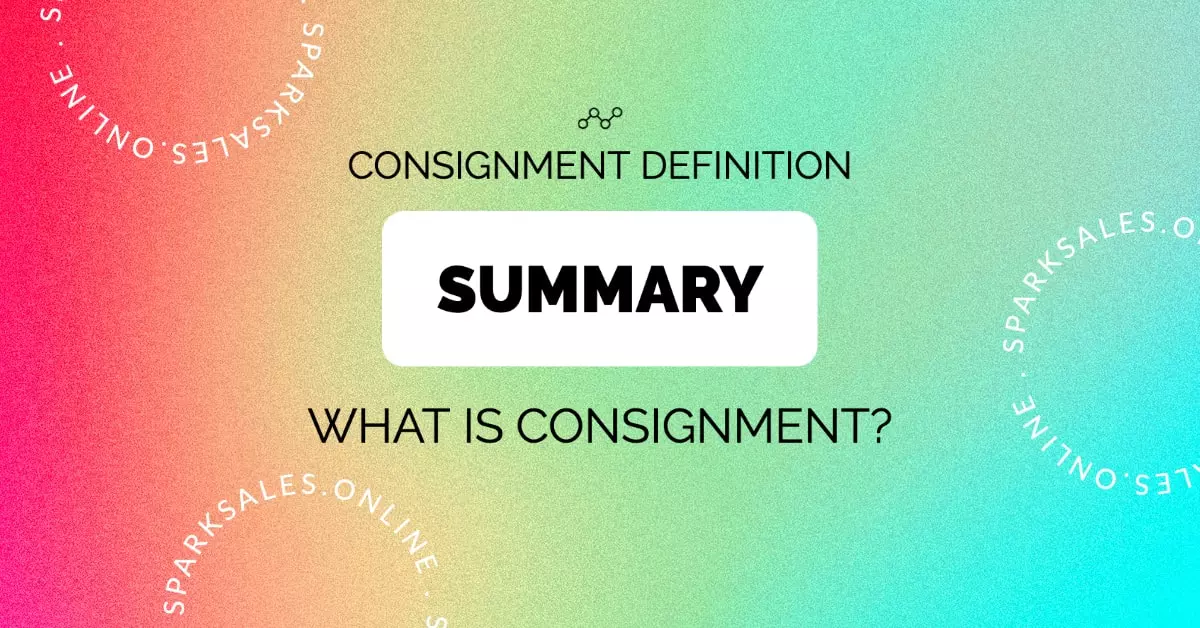
Summary
Now let’s sum up a lot of what we’ve covered regarding the pros and cons for the consignor and the consignee.
Number one, if you’re consigning your goods, you want to make sure that you check out the company you’re consigning your goods with. It would be best if you made sure that the company is legitimate. Ensure that they have insurance, a great place to store your products and that they’re accredited or legally certified in the area they’re selling.
You also want to determine the store’s match for your product. So if you’re selling your stuff through a physical store, does it serve the right demographic? You may want to think about where you’re placing your premium items for the best results.
If you are the consigner and you’re taking in someone’s goods, really think about what you’re taking in, make sure you’re educated about that product, and if you don’t know anything about that type of item, you probably shouldn’t accept it. On the other hand, if you are a specialist in specific categories, perhaps those are the lanes you should stay in. So always make sure you understand what you’re consigning and who’s taking in your consignment product.
Choose a consignment location that gets good traffic; that’s going to be essential. Whether you’re consigning your preloved items with a company online or a physical store, you want to make sure that they have proven sales, and if it’s a bricks and mortar store even better, you can walk in any time of the day and see how much foot traffic’s flowing through there.
Be sure to keep your terms in writing. Again, I cannot stress that enough; it doesn’t have to be a 10-page contract, but it needs to be something where everyone is clear about the process of the deal, the timing, the cost, the pay-out and all of that.
Know your fees as a consignor, and know how much you’re going to collect as the consignee. If your goods don’t sell, what next? How do you retrieve your items? If the company has had your goods for a year, how will they get them back to you? What is the agreement after that? Have that conversation with one another.
Determine how carefully goods are treated and protected. As a consignment business, if you’re not paying upfront for the product, you are responsible for making sure that the product is cared for in your ownership. As the consignee, if you’re not getting paid upfront for that product, you should investigate the company you’re giving your preloved item to, to make sure you understand what they are doing to keep your product safe whilst it is in their care.
Lastly, in consignment, it’s crucial to know the product well. You need to know what you’re selling because if you know what you’re selling when you create your listings, you will know how to market that item. You’re going to know who to market that item to. You’re going to have that item priced right; when your listing shows up, the buyer will know they’re buying from a reputable resource, and that gets you the sale.
If you’re selling your preloved items, it’s essential to know what you’re selling too. I know everyone has an emotional tie to their items, and a lot of the time, people think that their item is worth way more than it really is on the market, so do your homework. There are so many resellers today that the market can pretty much tell you what an item is going to sell for.
So in closing, should you open up your own consignment company? Only you know the answer, and if any of the information in this article can help you determine what that answer is, then great. Keep in mind that there’s a lot of information out there about the resale market, consignment and thrifting that could help you understand whether or not this is the right market for you.
Now you know everything there is to know about consignment whilst limiting mistakes and potential pitfalls. It can be an intimidating process but hopefully, the tools and information covered here make it seem less overwhelming. Contact us today if you need support with your online business and are looking to grow your sales further or even get set up. One of our team will reach out to set up a call and discuss the support that you need.
